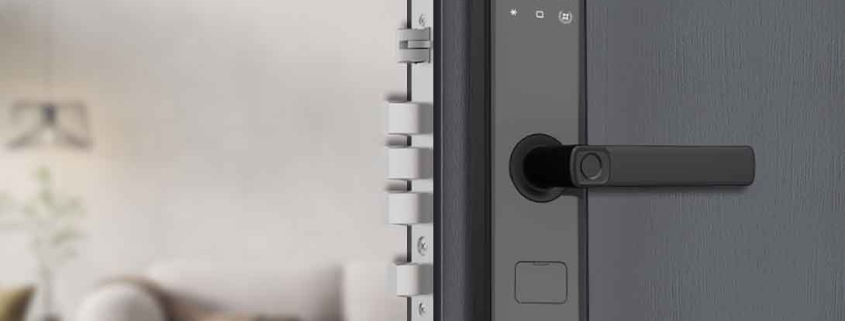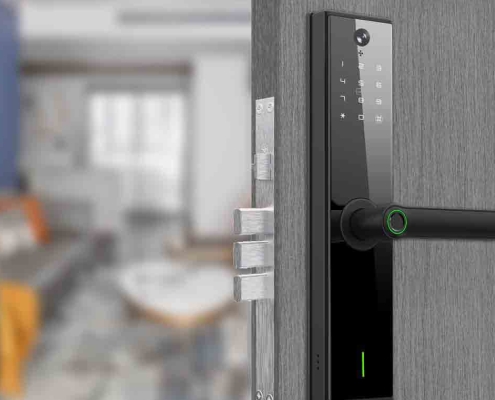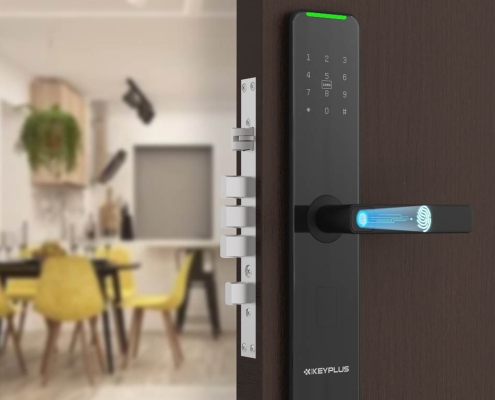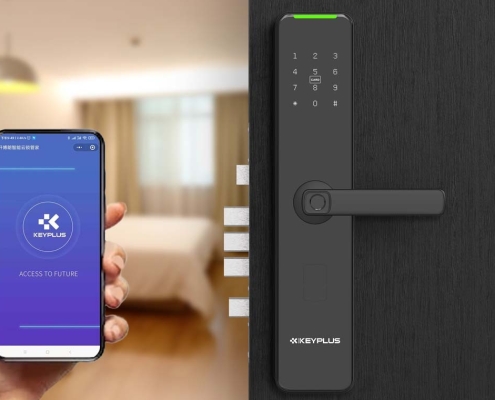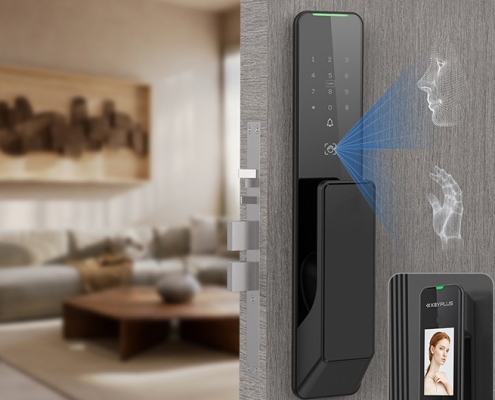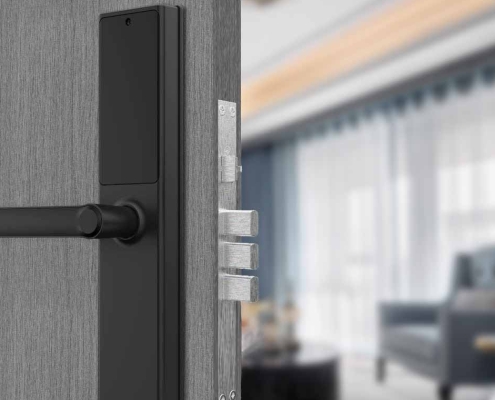Is a Smart Key Lock Safe?
Smart key locks, also known as electronic or digital locks, are becoming increasingly popular as homeowners and businesses seek more convenient and advanced security solutions. However, many people wonder: Are smart key locks truly safe?
This article explores the security strengths and potential vulnerabilities of smart key locks, compares them to traditional locks, and provides best practices to maximize their safety.
How Smart Key Locks Work
Before assessing their security, it’s important to understand how smart key locks function:
-
Keyless Entry: Instead of a physical key, they use:
-
Biometrics (fingerprint, facial recognition)
-
PIN codes (numeric passwords)
-
Mobile apps (Bluetooth, Wi-Fi, or NFC connectivity)
-
RFID cards/key fobs (proximity-based unlocking)
-
-
Remote Access: Many models allow locking/unlocking via smartphone, even from a distance.
-
Activity Logs: Some track who enters and exits, providing an audit trail.
Now, let’s examine their security.
Security Advantages of Smart Key Locks
1. No Physical Key = No Duplication or Lock Picking
Traditional locks are vulnerable to:
-
Lock picking (using tools to manipulate the mechanism)
-
Bumping (inserting a modified key to force the lock open)
-
Key duplication (unauthorized copies made without permission)
Smart locks eliminate these risks by removing the physical key entirely.
2. Stronger Authentication Methods
-
Biometrics (Fingerprint/Facial Recognition): Extremely difficult to fake.
-
Encrypted PIN Codes: Unlike keys, codes can be changed frequently.
-
Two-Factor Authentication (2FA): Some locks require both a code and a smartphone confirmation.
3. Remote Locking & Real-Time Alerts
-
If you forget to lock the door, you can secure it remotely.
-
Some models send alerts when someone tries to tamper with the lock.
4. Temporary Access for Guests
-
Grant time-limited access to cleaners, delivery personnel, or guests without giving out a permanent key.
-
Revoke access instantly if needed.
5. No Lost or Stolen Keys
Losing a traditional key means rekeying or replacing the lock. With smart locks:
-
You can delete lost RFID cards or change PINs instantly.
-
No need to worry about stolen keys granting access.
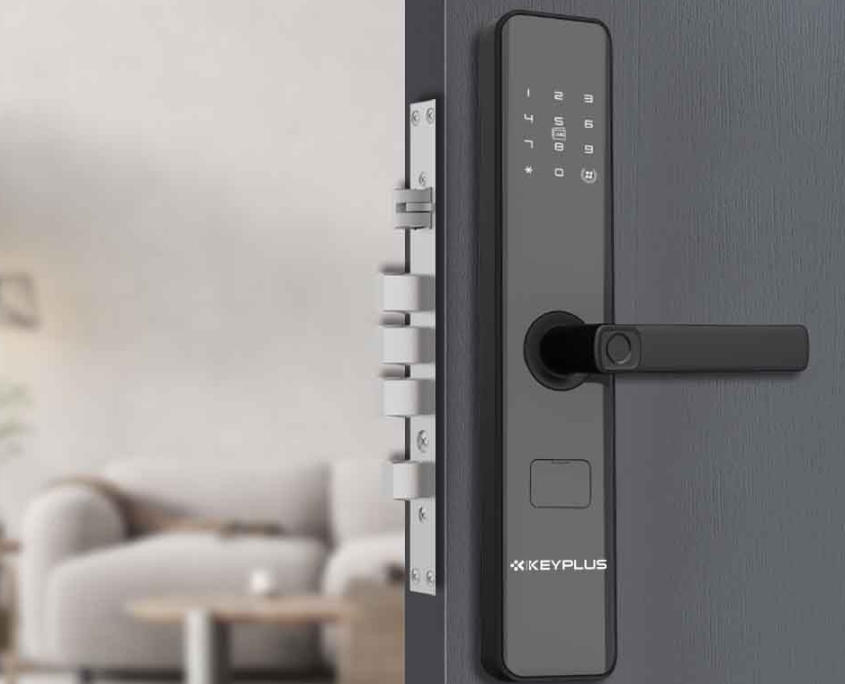
Potential Security Risks of Smart Key Locks
While smart locks offer many benefits, they are not without vulnerabilities.
1. Hacking & Cybersecurity Threats
-
Bluetooth/Wi-Fi Vulnerabilities: If the lock uses weak encryption, hackers may intercept signals.
-
Mobile App Exploits: Poorly secured apps could allow unauthorized access.
-
Brute-Force Attacks: Weak PIN codes (e.g., “1234”) can be guessed.
Mitigation:
-
Use strong, unique PINs (at least 6 digits).
-
Choose locks with end-to-end encryption.
-
Regularly update firmware to patch security flaws.
2. Power or Connectivity Failures
-
Battery Drain: If batteries die, some locks become unusable unless they have a backup keyhole.
-
Internet Outages: Cloud-based locks may malfunction if Wi-Fi goes down.
Mitigation:
-
Opt for models with physical key backups or emergency power options (e.g., USB charging).
-
Check battery levels regularly.
3. Physical Tampering
-
Some smart locks can be pried open with force.
-
Freezing or magnet attacks may disrupt electronic components.
Mitigation:
-
Install reinforced strike plates to prevent forced entry.
-
Choose tamper-resistant models with anti-pry designs.
4. False Sense of Security
-
Some users assume smart locks are “unhackable,” leading to lax security habits.
-
If not properly configured, they can be less secure than traditional locks.
Mitigation:
-
Always enable all available security features (e.g., auto-locking, tamper alerts).
-
Combine smart locks with cameras or alarms for layered security.
Smart Key Locks vs. Traditional Locks: Which Is Safer?
| Feature | Smart Key Lock | Traditional Lock |
|---|---|---|
| Key Duplication Risk | No (keyless) | Yes (copies can be made) |
| Lock Picking Risk | Very low (no keyhole) | High (skilled thieves can pick) |
| Remote Access | Yes (lock/unlock from anywhere) | No |
| Tamper Resistance | Varies (some are pry-resistant) | Depends on lock grade |
| Power Dependency | Requires batteries/Wi-Fi | No power needed |
| Access Control | Temporary codes, biometrics | Only physical keys |
Verdict: Smart locks are generally more secure against traditional break-in methods (picking, bumping, key theft) but introduce new digital risks (hacking, power issues).
Best Practices for Maximizing Smart Lock Security
To ensure your smart key lock remains as secure as possible:
-
Use Strong Authentication
-
Enable biometrics + PIN for two-layer security.
-
Avoid simple codes like “0000” or “1234.”
-
-
Keep Firmware Updated
-
Manufacturers release patches for vulnerabilities—always install updates.
-
-
Enable Auto-Lock
-
Prevents doors from staying unlocked accidentally.
-
-
Use a Backup Key or Power Source
-
Ensure you can still enter if batteries die.
-
-
Monitor Access Logs
-
Check who enters and exits, especially for shared spaces.
-
-
Secure Your Wi-Fi Network
-
Use WPA3 encryption and a strong router password.
-
-
Combine with Other Security Measures
-
Install door sensors, cameras, or alarms for added protection.
-
Final Verdict: Are Smart Key Locks Safe?
Yes—if used correctly. Smart key locks provide stronger protection against physical break-ins than traditional locks but require proper setup to counter digital threats.
Who Should Use Smart Locks?
-
Tech-savvy users who can manage digital security.
-
Frequent travelers needing remote access.
-
Families wanting to track home access.
Who Should Be Cautious?
-
Those in areas with poor Wi-Fi or frequent power outages.
-
Users who don’t update software regularly.
-
People who prefer simple, non-digital solutions.
Conclusion
Smart key locks offer enhanced convenience and security but are not invincible. By understanding their risks and following best practices, you can significantly reduce vulnerabilities and enjoy keyless living safely.
For maximum protection, combine smart locks with other security measures like cameras and alarms. When properly configured, they provide a more secure and flexible alternative to traditional locks.

